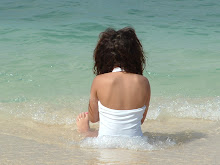In 1915, at the age of 23, Bessie Coleman went to Chicago to stay with her brothers, Walter and John. She became a beautician and worked as a manicurist in the barbershops of Chicago’s south side where she met Robert Abbott, publisher of the Chicago Defender newspaper. Bessie longed to learn to fly, but could find no one willing to teach a person of color. On the advice of Robert Abbott, she prepared herself to attend aviation school in France by taking French lessons at a night school and saving her money for the trip. Bessie departed for France in November, 1920, to take lessons at Ecole d’Aviation des Freres Caudron in Le Crotoy. Her courage and her determination to fly this new contraption called an aero plane was relentless.
On June 15, 1921, according to renowned biographer, Doris Rich, Queen Bess, a beautiful, “fly”, brown skinned woman, became the first American of any so-called race or gender to receive an International Pilot’s license from the Federation Aeronautique Intenationale (F.A.I.). This license gave her authority to pilot an aircraft anywhere in the world! Returning with her license to New York in September, 1921, she was greeted by a surprising amount of press coverage.
Flying as entertainment could provide financial benefits for an aviator, but required skills that Bessie did not have. Again, she departed for France for more training. When Bessie returned to the United States, she knew she needed publicity to attract paying audiences. She accepted speaking engagements and flying stunts to raise funds for her dream of a flight school for “Negroes”. Doris Rich, in her book on Bessie, said "as an aviator she was a threat to whites who cherished their racial superiority, and as a woman pilot she threatened the ego of black males." Queen Bess – Daredevil Aviatrix was a true champion of her race. She refused to appear in any air show that did not allow blacks to attend. Her motto was "No Uncle Tom stuff for me." She was determined to bolster black pride and refused to promote the stereotypical, derogatory image most whites had of blacks.
Her first appearance was an air show on September 3, 1922, at Curtiss Field near New York. In a plane borrowed from Glenn Curtiss, she was checked out in the Jenny in front of the crowd. More shows followed in Memphis and Chicago, and then in Texas in June, 1925.
She traveled to California to earn money to buy a plane of her own, but the engine malfunctioned, and the plane crashed leaving Bessie to return to Chicago to form a new plan. It was another two years before she finally succeeded in lining up a series of lectures and exhibition flights in Texas. At Love Field, she made a down payment on an old Jenny – JN-4 with an OX-5 engine.
Bessie then traveled to the southeast where she did a series of lectures in black theaters in Florida and Georgia. She opened a beauty shop in Orlando to hasten her accumulation of funds to start the long-awaited aviation school. Using borrowed planes, she continued exhibition flying and occasional parachute jumping. As she had done in other U.S. locations, Bessie refused to perform unless the audiences were desegregated and everyone attending used the same gates.Bessie made the final payment on her plane in Dallas and arranged to have it flown to Jacksonville. On the evening of April 30, 1926, at the age of 34 years young, she and her mechanic, William Wills, took the plane up for a test flight. Once aloft, the plane malfunctioned and the mechanic lost control. Bessie fell from the open cockpit several hundred feet to her death while Wills stayed with the plane and perished also. Like many of her aviation contemporaries she met an untimely death, but she helped to make aviation accessible to all! Brave Bessie’s legacy lives on today.
Five thousand mourners attended a memorial service for Bessie in Orlando. An estimated 15,000 people paid their respects in Chicago - at the funeral of that little girl from Texas who dreamed of a better life as she picked cotton at the dawn of the 20th century.
Only after her death did Bessie Coleman receive the attention she deserved. Her dream of a flying school for African Americans became a reality when William J. Powell established the Bessie Coleman Aero Club in Los Angeles in 1929. As a result of being affiliated, educated or inspired directly or indirectly by the aero club, flyers like the Five Blackbirds, The Flying Hobos, The Tuskegee Airmen and others continued to make Bessie’s dream a reality.
Queen Bess continues to receive accolades and honors such as: Memorial Day Fly Over in Chicago USA Postage Stamp Texas Aviation Hall of Fame National Aviation Hall of Fame, Dayton, OHChicago O’Hare Airport is on 10000 Bessie Coleman Drive Bessie Coleman Room at FAA Headquarters Bessie Coleman Middle School
Bessie Coleman Aviators ClubMop Top Shop ScientistBessie Coleman Library National Great Blacks in Wax Museum Black Wings – Smithsonian DVD
























No comments:
Post a Comment